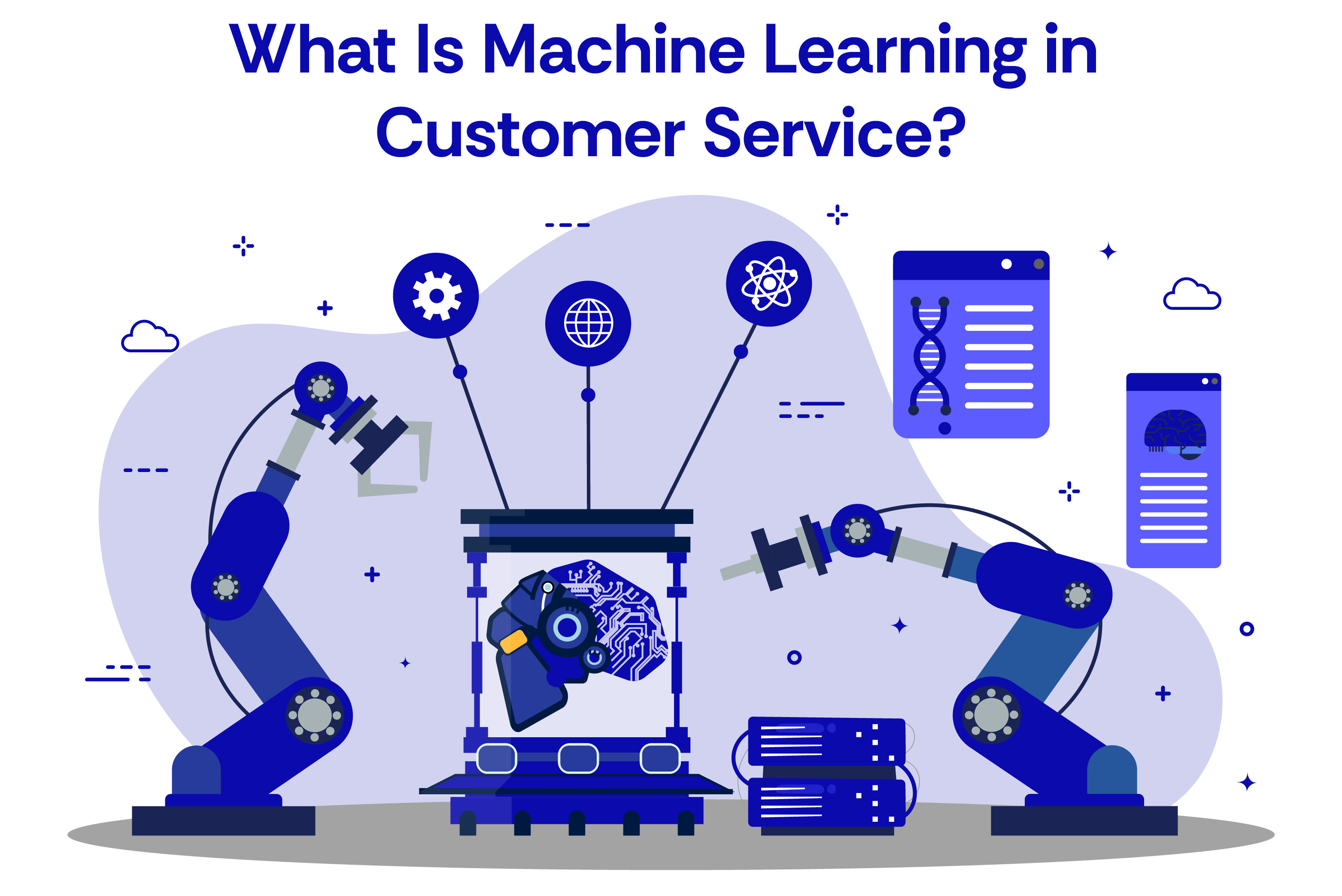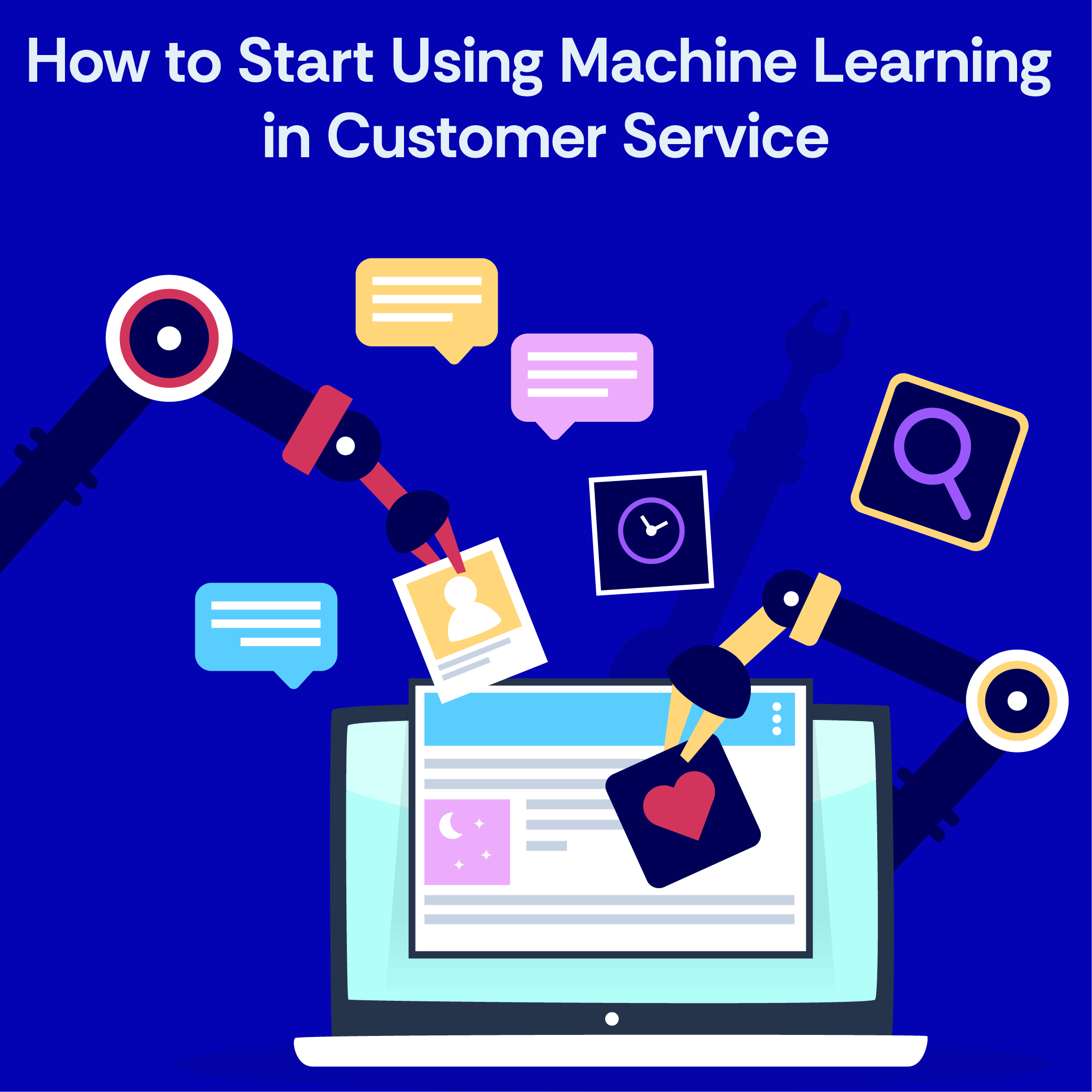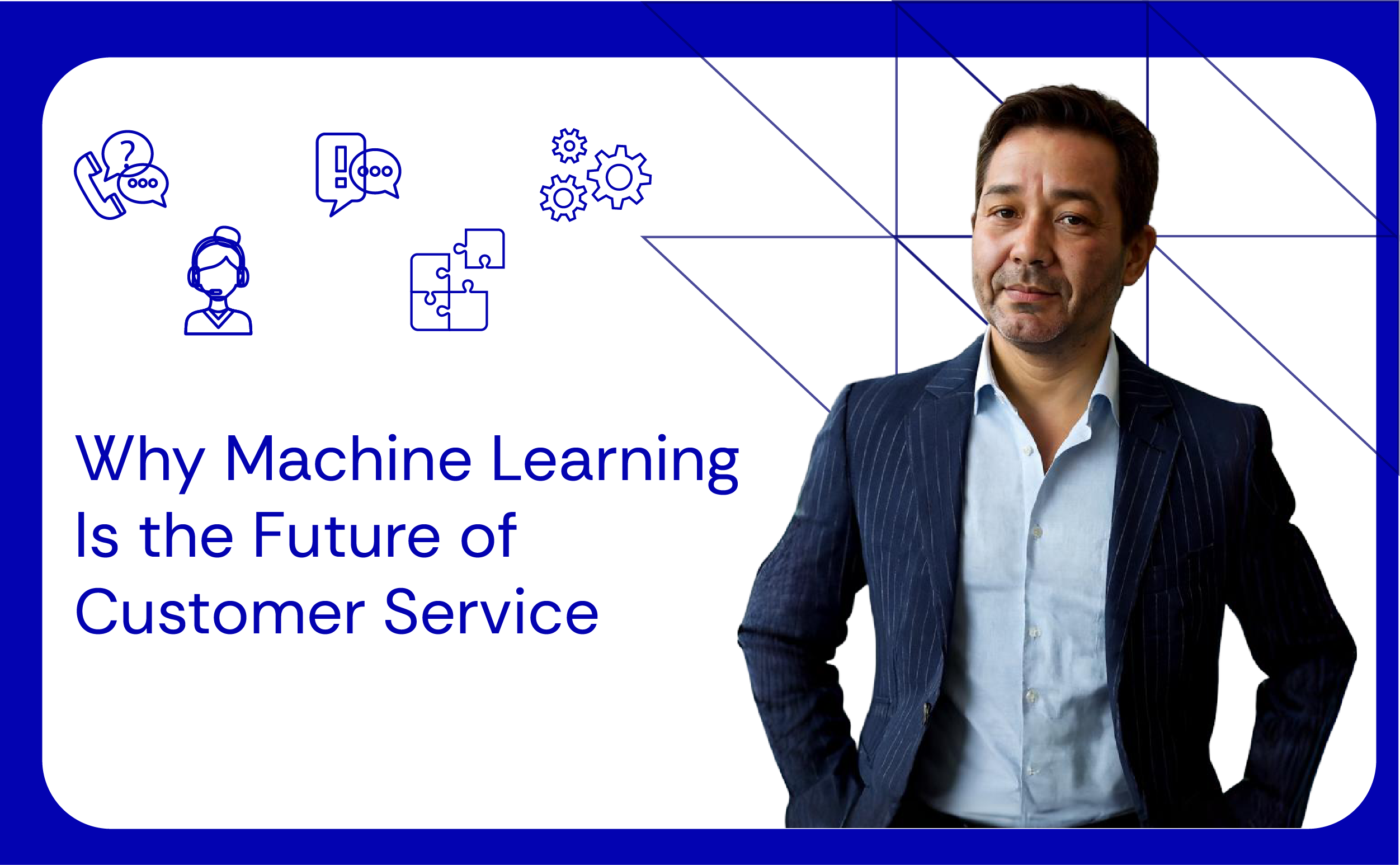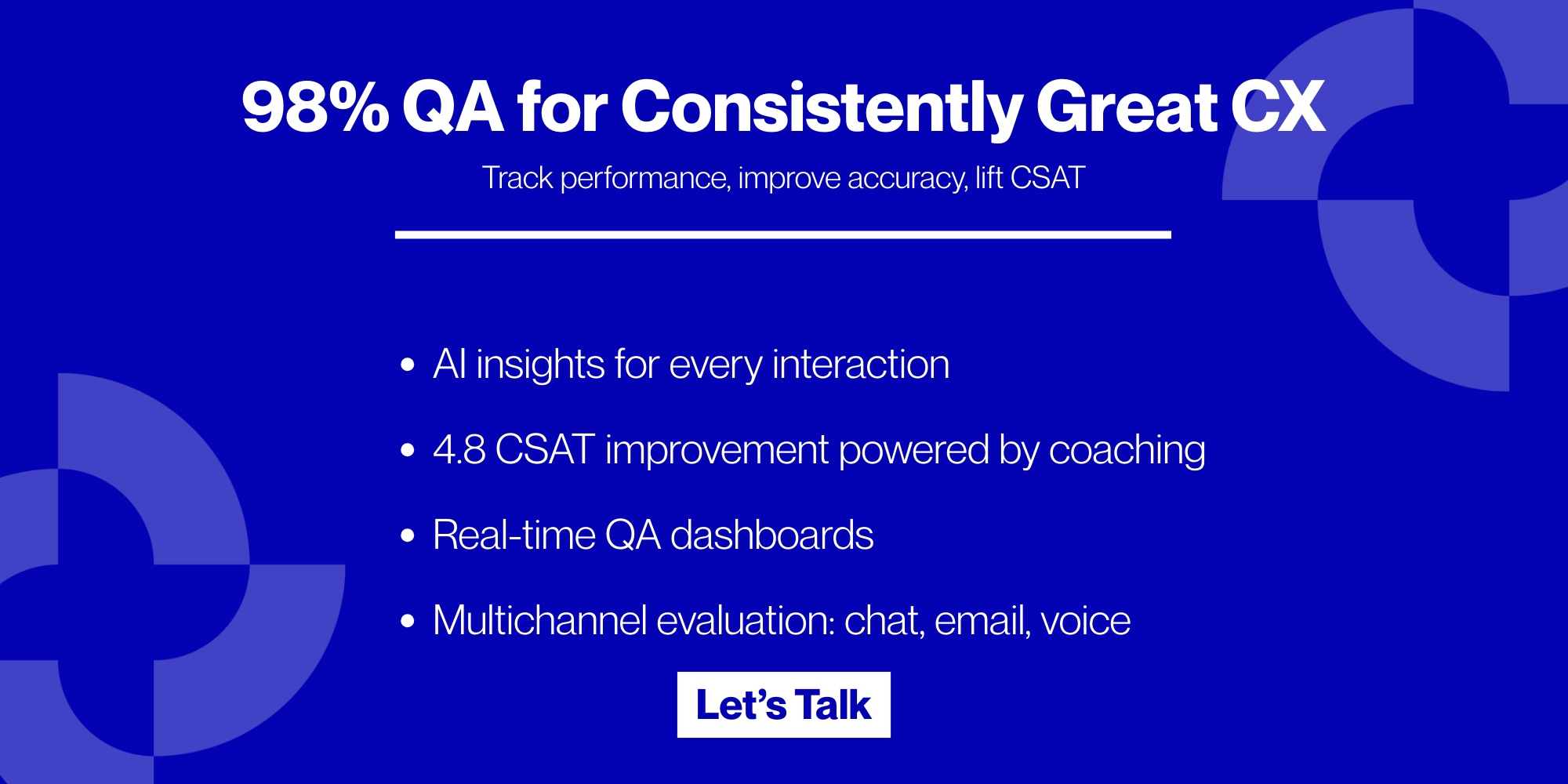Key Takeaways
- Machine learning customer service tools help automate repetitive tasks, personalize interactions and improve speed and accuracy across CX operations.
- AI and machine learning in customer service enable predictive support, smart routing and real-time sentiment analysis that drives customer loyalty.
- AI-driven customer service reduces cost while boosting scalability and consistency which is critical for high-growth D2C and consumer brands.
- Even small and midsized teams in the US, UK & Australia can leverage machine learning tools like chatbots and intelligent ticket routing to enhance service quality.
What Is Machine Learning in Customer Service?

Machine learning (ML) is a type of artificial intelligence that doesn’t just follow a set of rules. Instead, it learns from data. The more data it gets, the better it gets at spotting patterns, understanding context, and making smart decisions on its own, helping CX leaders at $5M+ revenue brands identify and resolve customer issues faster.
If you bring that power into the world of customer service? We get systems that can:
- Recognize common questions based on keywords and phrasing
- Predict what a customer is going to ask before they even finish typing
- Automatically suggest solutions based on past cases
- Learn which types of responses perform best—and adjust accordingly
- Continue improving with every interaction, without you lifting a finger
For customer experience leaders, it’s basically like hiring a super-agent who never sleeps, never forgets anything, and gets smarter every single day. Let’s dive right into what this looks like in real life!
For more context on how AI complements human support, read Discover the Future of AI in Customer Service.
What ML in Customer Service Looks Like in Real-Life Businesses
Across industries and particularly in D2C and consumer brands, machine learning is transforming how teams deliver support. Businesses the world over have transitioned to ML-based tools in their customer service processes. Here’s what that looks like:
- AI-driven chatbots: Today’s ML-powered chatbots can detect intent, remember past conversations, and respond naturally. And while 50% of customers still feel that there is scope of improvement in the experience chatbots provide, it is a significant improvement from 66% dissatisfaction that we saw in 2019.
- Smart routing: Machine learning analyzes who the customer is, what they’re asking, and even their emotional tone—then sends them to the best-fit agent, not just whoever’s available.
- Predictive support: Machine learning can spot early warning signs—like repeated errors or sudden spikes in support requests—and help you intervene proactively.
- Sentiment analysis: ML tools can scan messages for tone, urgency, and emotional cues, then alert your team if someone sounds angry, confused, or ready to churn, so you can step in before it escalates.
- Auto-sorting and response tools: Machine learning can instantly categorize incoming messages, prioritize them, and even send out accurate replies to common issues, freeing up your team to focus on higher order tasks.
To see ML and automation in action, explore our Augmented Agent for Customer Service Benefits case study.
Why Machine Learning Is the Future of Customer Service
Still wondering if this machine learning thing is just the latest buzzword? Here’s the truth: machine learning in customer service isn’t some passing trend—it’s already changing how companies interact with customers. Let’s break down why machine learning is the future of customer service:
- Customers expect fast, frictionless service: Customers aren’t comparing your support team to other businesses in your niche. They’re comparing you to the best of the best. In 2025, customers benchmark your response time against global CX leaders like Amazon and Netflix or Google’s instant answers. Machine learning helps you deliver that “wow” experience, without needing a massive support team or endless resources. With ML:
- Responses get faster
- Answers get smarter
- And customers feel like you get them from the very first interaction
- Personalization at scale: Customers love feeling known. Research by McKinsey shows that 71% of customers expect personalized experiences. That’s where ML shines. A machine learning-powered system can instantly pull in order history, previous tickets, preferred products or services and common issues for that user profile making even bot-led conversations feel human and context aware.
- Lower support costs without cutting quality: Manual customer service is expensive. Machine learning automation can cut costs by up to 30% while maintaining service quality. ML handles the repetitive stuff such as password resets, shipping updates, and common “how do I…” questions. That frees up your agents to focus on the high-impact, high-emotion conversations where empathy and expertise are key.
- Continuous improvement: With ML, your system learns automatically—based on real-time feedback and actual user behavior. What does that mean?
- If a chatbot response isn’t landing, it adapts
- If customers start asking about a new issue, it flags it
- If patterns shift, it shifts with them
Continuous learning makes ML based service models more beneficial in the future than traditional scripted systems.
How to Start Using Machine Learning in Customer Service

Okay, so by now you’re probably thinking: “Alright, this all sounds amazing—but where do I even begin?” The good news, though, is that you don’t need to burn your current system to the ground to start using machine learning in customer service. In fact, the smartest approach is to start small, test what works, and build from there.
Here’s how you can roll out ML in your support strategy—step by step:
- Introduce an AI-powered chatbot: Modern chatbots are nothing like the old-school bots that just spit out scripted responses. With AI and machine learning in customer service, your chatbot can:
- Understand what the customer is really asking
- Respond naturally
- Handle full conversations
- Learn from previous chats to get smarter over time
Some popular tools to check out are Intercom, Drift, Zendesk AI and Ada. Set one up, train it on your top FAQs, and let it do its thing.
- Use ML for ticket routing: Machine learning can analyze a request the moment it comes in—looking at keywords, sentiment, history, and urgency—and route it to the right agent right away. That means:
- No more random assignments
- No more back-and-forth for your customers
- Faster resolution, happier people
- Implement sentiment analysis: Sentiment analysis uses ML to read between the lines of messages, chats, and even voice calls. It picks up on emotional tone, urgency, and intent. This matters because you can prioritize angry or frustrated customers, trigger escalations automatically and give your agents helpful context before they even reply.
- Let AI handle repetitive tasks: Machine learning can step in and manage all the stuff your agents are tired of doing, like password resets, shipping updates or account verifications and basic how-to questions.
- Lean on data: The more customer conversations, support tickets, behavior patterns, and feedback loops you feed into the system, the smarter it gets. ML learns from what customers ask, how they ask it, which responses work and where things break down.
For a detailed breakdown of omnichannel implementation, review Enhance Omnichannel Helpdesk Strategies.
The Role of AI-Driven Chatbots in the Future of Support
Today’s AI-driven chatbots are capable of conversing, learning, and adding value to the customer experience in ways that are honestly pretty impressive. What makes modern chatbots so different? Let’s break it down:
- They’re context-aware: Modern bots don’t treat every question like it’s brand new. They remember what you’ve already said, track where you are in a conversation, and even reference previous interactions.
- They speak your customers’ language: Multilingual support used to require entire teams. Now? AI chatbots can switch languages on the fly, providing a smooth, localized experience for your global customers.
- They integrate with everything: Today’s chatbots are connected to your CRM, knowledge base, order system, ticketing platform and internal tools. That means they can pull up account details, update records, trigger workflows, and hand off a conversation to a live agent—without missing a beat.
- They know when to escalate: Today’s bots know their limits. If they detect frustration, confusion, or a more complex issue, they’ll proactively escalate to a human—often with a full transcript and context in hand so your agent can pick up right where the bot left off.
So… what does this mean for the future of support? AI-driven chatbots aren’t just some optional add-on anymore. They’re becoming core members of the support team—saving businesses 2.5 billion hours annually. That means lower wait times, faster resolution, happier customers and a more productive support team.
Ready or Not, the Future Is Here
Machine learning customer service isn’t something you’ll “maybe need to think about someday.” It’s happening right now—and it’s today’s competitive advantage. The brands that are already using it? They’re not just meeting expectations—they’re exceeding them.
If you want to get started on implementing ML in your customer service operations, you just need the right tools, a willingness to test, and a focus on solving real customer pain points. Start with something simple:
- Add a smart chatbot to your help center
- Automate ticket tagging and routing
- Use sentiment analysis to spot unhappy customers early
- Try auto-responses for your most common questions
Each little step builds momentum—and soon, you’ll have a support experience that feels faster, smarter, and way more personalized.
Leading D2C brands are already using ML for predictive support, proactive engagement and seamless omnichannel communication.
For additional inspiration, see Emerging Contact Center Technologies and Trends to understand how ML ties into broader CX transformation.
Need help making machine learning work for your support team? At Atidiv, our team of customer experience specialists helps growing businesses bring customer support into the future.
We help you:
- Identify AI/ML integrations that align with your CX goals
- Optimize ticket workflows and automation for measurable ROI
- Train teams to combine human empathy with machine intelligence
Whether you’re just starting to explore automation. Looking to create omnichannel customer experiences powered by AI or just looking to boost your support team’s efficiency without burning them out, we’ll help you find the tools, build the workflows, and keep the human touch where it counts.
Partner with Atidiv to scale smarter.
FAQs on Why Machine Learning Is the Future of Customer Service (and How You Can Leverage It)
1. What is machine learning customer service?
It’s customer support powered by smart systems that learn from data—like past conversations and behavior—so they can provide faster, more accurate, and more personalized help over time.
2. How is AI used in customer service automation?
AI handles tasks like answering common questions, routing tickets, detecting customer emotions, and even solving problems proactively before they escalate—all without human input.
3. What’s the difference between traditional automation and machine learning?
Traditional automation follows rules. Machine learning evolves from data and improves its responses based on patterns and customer feedback. It’s smarter, faster, and more adaptable.
4. Are AI-driven customer service tools expensive to implement?
Not necessarily! Many tools like chatbots and helpdesk automations are affordable and scale with your business. You can start small and expand as you see results. Many ML-based solutions offer tiered, scalable pricing suitable for CX teams with 5–50 members.
5. Is the future of AI chatbots really that promising?
Absolutely. Today’s chatbots are context-aware, emotionally intelligent, and capable of handling a wide range of tasks— making them indispensable for modern customer support.

